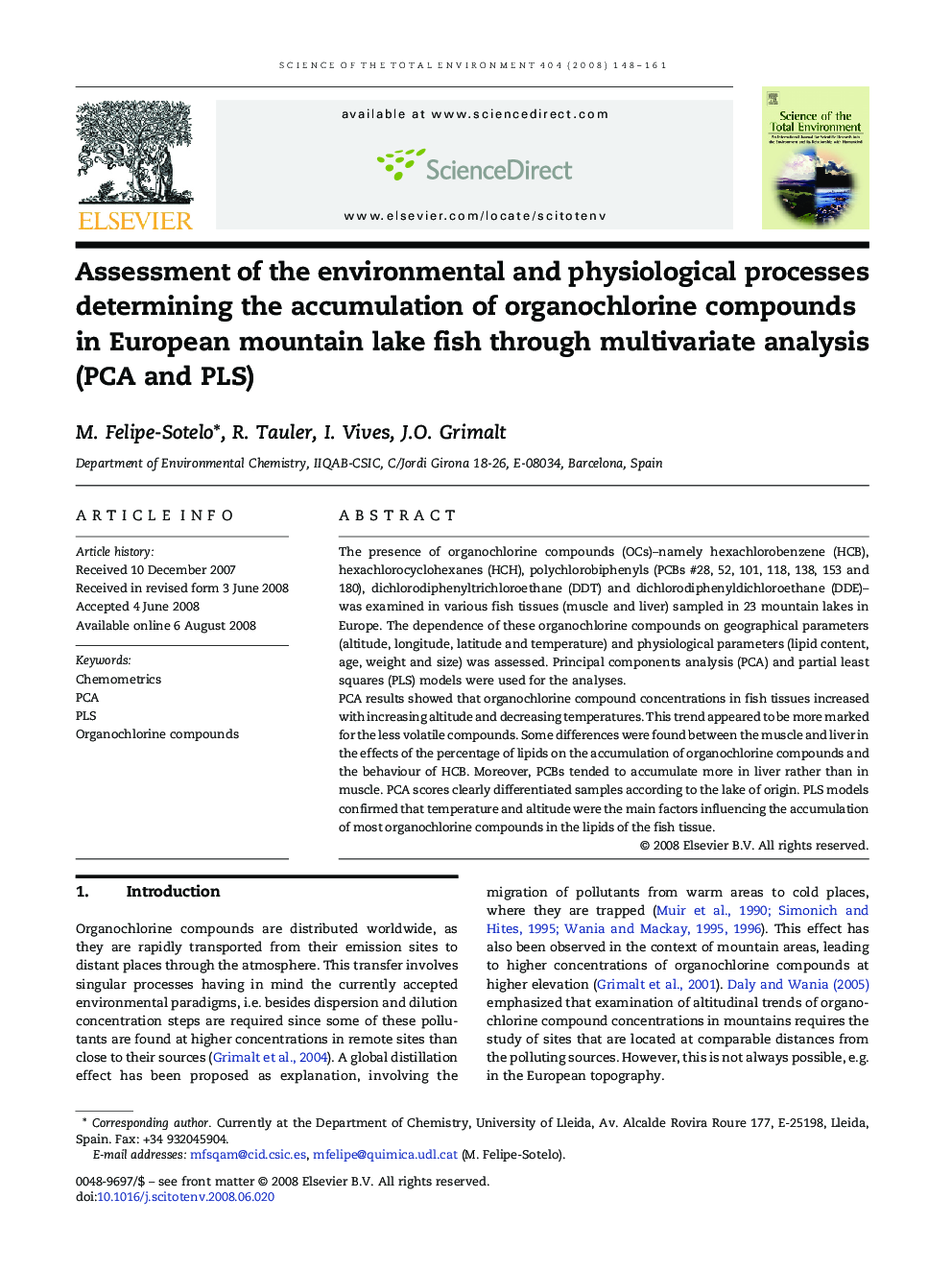| Article ID | Journal | Published Year | Pages | File Type |
|---|---|---|---|---|
| 4432361 | Science of The Total Environment | 2008 | 14 Pages |
The presence of organochlorine compounds (OCs)–namely hexachlorobenzene (HCB), hexachlorocyclohexanes (HCH), polychlorobiphenyls (PCBs #28, 52, 101, 118, 138, 153 and 180), dichlorodiphenyltrichloroethane (DDT) and dichlorodiphenyldichloroethane (DDE)–was examined in various fish tissues (muscle and liver) sampled in 23 mountain lakes in Europe. The dependence of these organochlorine compounds on geographical parameters (altitude, longitude, latitude and temperature) and physiological parameters (lipid content, age, weight and size) was assessed. Principal components analysis (PCA) and partial least squares (PLS) models were used for the analyses.PCA results showed that organochlorine compound concentrations in fish tissues increased with increasing altitude and decreasing temperatures. This trend appeared to be more marked for the less volatile compounds. Some differences were found between the muscle and liver in the effects of the percentage of lipids on the accumulation of organochlorine compounds and the behaviour of HCB. Moreover, PCBs tended to accumulate more in liver rather than in muscle. PCA scores clearly differentiated samples according to the lake of origin. PLS models confirmed that temperature and altitude were the main factors influencing the accumulation of most organochlorine compounds in the lipids of the fish tissue.
